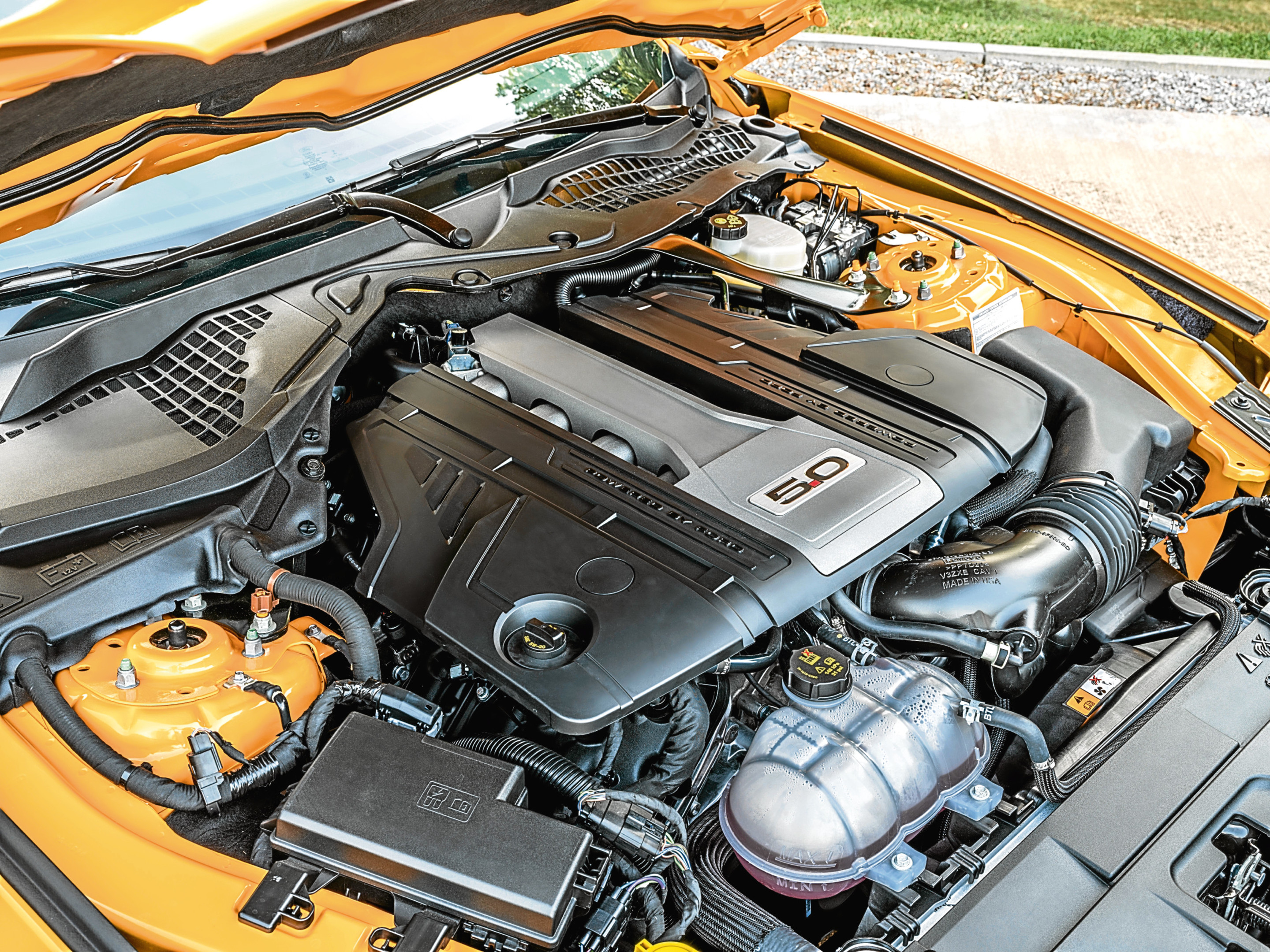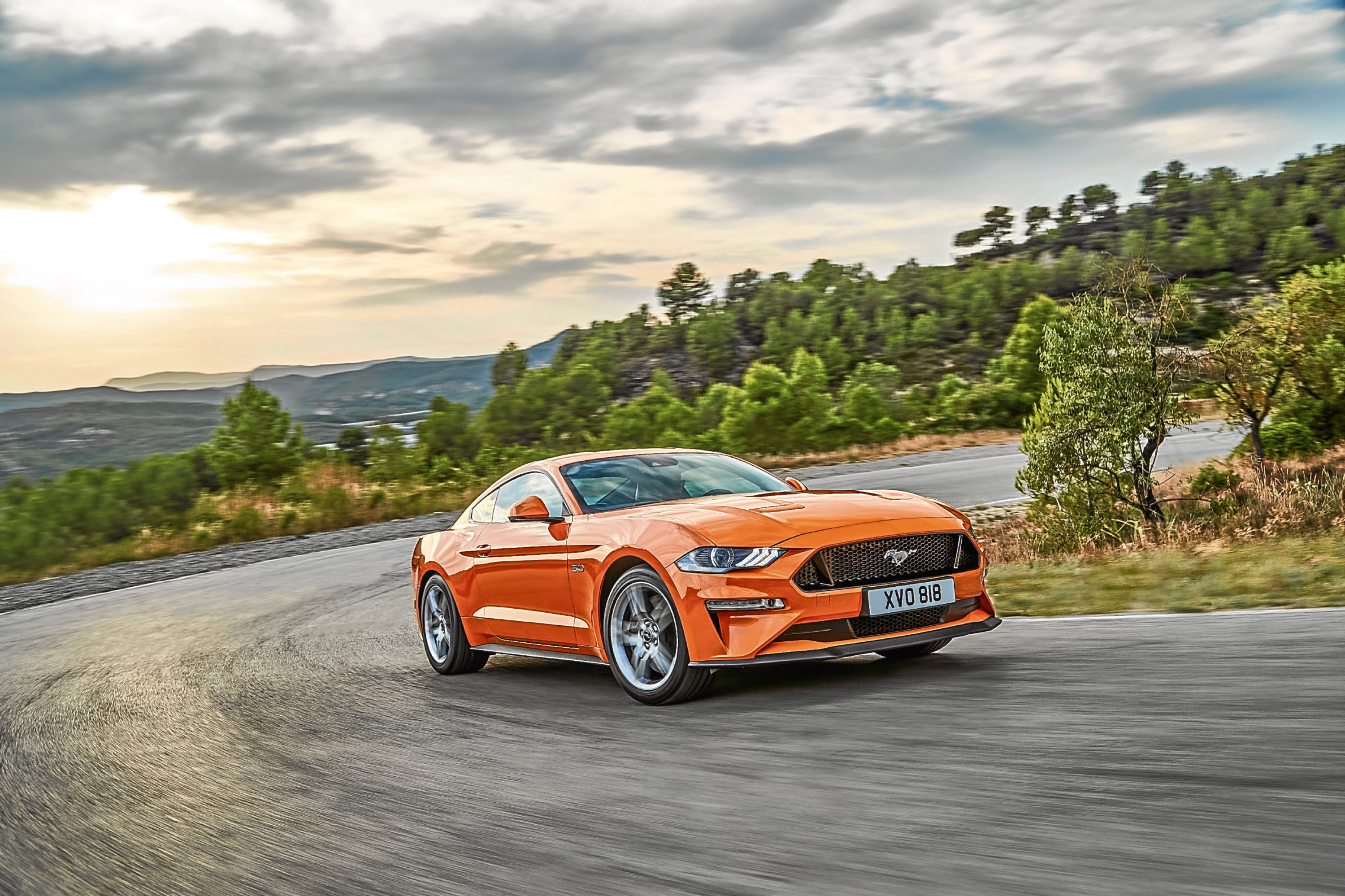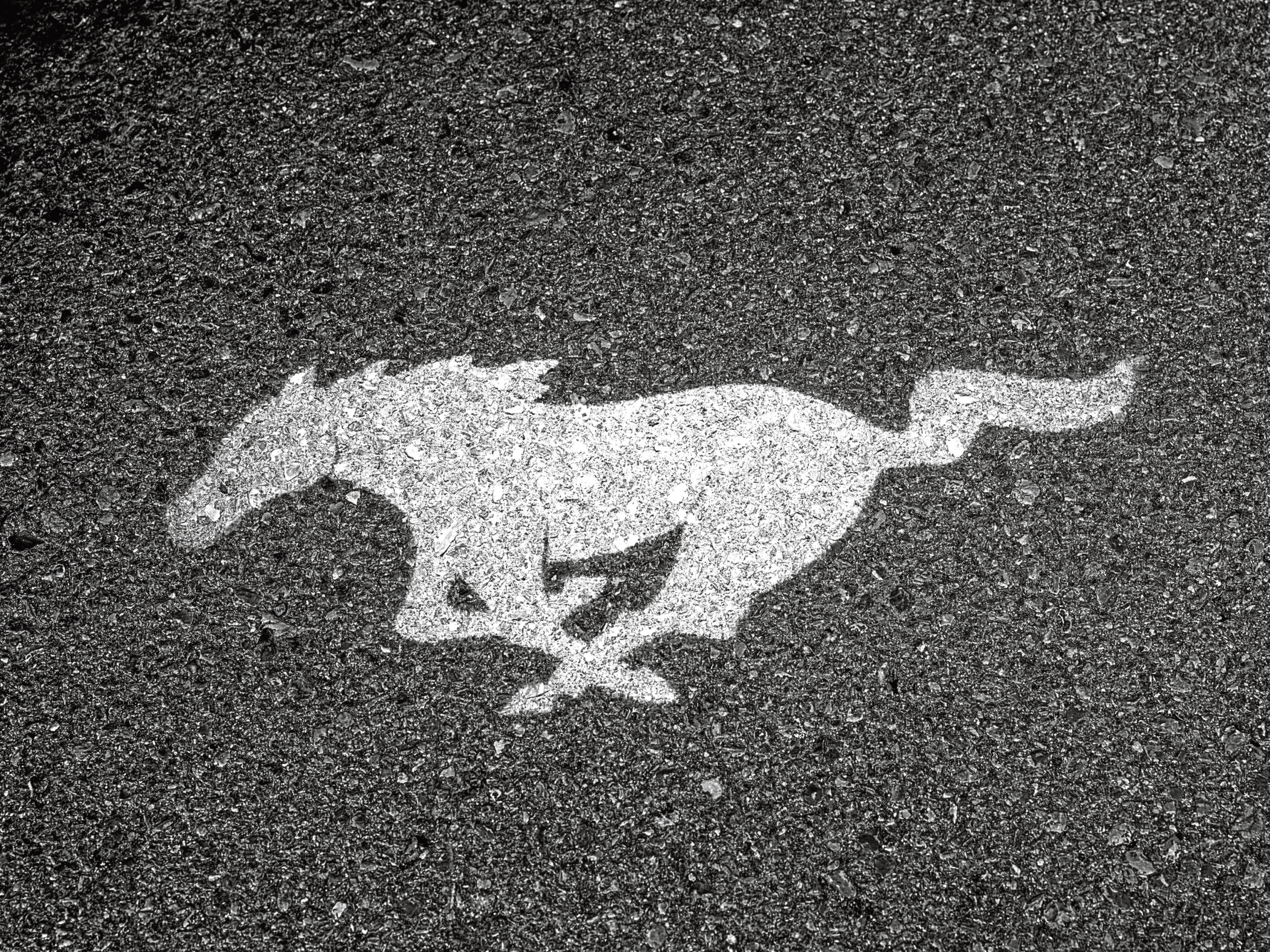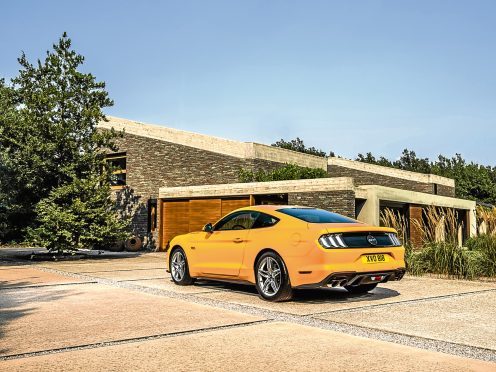What hasn’t changed about the Ford Mustang in its latest guise is this model’s mantra of plenty of power at an affordable price.
As before, there’s a choice of both Fastback coupe and Convertible bodystyles, but in both cases there’s a smarter look, both inside and out. The big 5.0-litre V8 gets more power – and there’s a fresh 10-speed auto gearbox for the base 2.3-litre EcoBoost derivative too. What hasn’t changed is that pricing continues to make many comparable European performance cars look very expensive.
It’s almost a national pastime to take pot shots at American sports coupes. The specialist magazines tend to dismiss them as crude, lumbering fuel hogs that couldn’t get out of their own way if they tried. Historically, some of that has been down to jealousy. Traditionally after all, many US sportscars haven’t been sold here in right-hand drive form, leaving the ‘experts’ yet another reason to bitterly snipe away at Corvettes, Camaros, Mustangs and Vipers to their hearts’ content.
And then, a few years back, Ford announced it was going to make the Mustang in right-hand drive and offer it for sale in the UK, which meant that the same dealer selling Fiestas could also, rather incredibly, offer you a 5.0-litre V8 Mustang. Suddenly American sports coupes didn’t seem so stupid any longer. Sales since have been strong, so much so that Ford has moved to further ‘Europeanise’ this car. But will that dilute it’s appeal? Let’s see.
As before, the Mustang offers a choice between two very different powerplants. While there will be many who don’t see the point in choosing anything other than the 5.0-litre V8, Ford predicts a good take-up of the 2.3-litre Ecoboost turbo four. With UK pump prices being what they are, you can see the logic. It’s not exactly limp-wristed either. With 286bhp to call upon, it’ll get to 62mph in around six seconds in six-speed manual guise. As an option, Ford now offers an auto transmission with no fewer than 10 speeds. The brand claims that this new auto ‘box offers greater fuel efficiency and improved acceleration. The gearbox’s electronic control system enables settings that optimise performance for the car’s various Drive Modes, plus there’s real-time adaptive shift-scheduling that allows the transmission to adapt to changing conditions and select the right gear in any situation – from coast-road cruising to the drag-strip.
In short, for the right buyer, the 2.3-litre EcoBoost Mustang variant could now be quite a tempting proposition. Look at the ballistic V8 version though and your resolve might weaken. Its output has now been increased to 443bhp, plus there’s more low-end torque than there was before.
As for driving dynamics, well Ford claims to have improved these for European buyers with this enhanced model. Recalibrated shock absorbers should improve stability through corners, while the rear suspension has been stiffened with a cross-axis joint that reduces unwanted movement at each corner that can lead to body flex. Thicker anti-roll bars also better control body-roll for sharper handling. A new optional MagneRide Damping System can deliver a lightning-quick response to changing road conditions. Plus there are two new Drive Modes in addition to the usual Normal, Sport, Track and Snow/Wet settings. Drag Strip Mode optimises performance for maximum acceleration from standing starts. And My Mode enables drivers to select their own preferred settings for performance, dynamics and exhaust sound.

In addition, the car also has a Good Neighbour Mode that can be programmed to automatically limit the exhaust’s noise output at pre-programmed times of the day to avoid disturbing your neighbours, not least when firing up the legendary 5.0-litre V8 early in the morning.
Buyers continue to choose between fixed-top or Convertible bodystyles and it’s the coupe that most distinctively retains the characteristic fastback shape the Mustang has always had, a look which first debuted way back in 1965. Let’s talk you through the changes made to this revised model. The bonnet profile is now lower with integrated air vents, combined with a revised lower grille design to give the Mustang a sharper, more aggressive face, while improving aerodynamics. The headlamps and tail lights have been re-styled too and at the rear, there’s a sleeker bumper and a more aggressive diffuser.
Inside, Ford has tried to give the cabin more of the premium feel you get in notable German rivals. Soft-touch materials now feature for the door linings and the door handles are finished in aluminium. The centre console features a smarter hand-stitched, soft-touch wrap, finished with stitching in a contrast colour for a more dynamic and upscale feel. Leather-trimmed, heated and cooled seats, and a heated steering wheel are also offered across the line-up for the first time for ultimate comfort. There’s also now a customisable, all-digital, 12-inch LCD instrument cluster and the centre-dash infotainment system has been upgraded to SYNC 3 status, which includes Apple CarPlay/Android Auto smartphone mirroring functionality.

None of this is going to leave the likes of Audi and Mercedes reaching for their drawing boards anytime soon, but a Mustang needs to feel like a Mustang; a proper blue-collar, hairy-chested people’s sports car. No, that’s not a cop-out: Ford had long and detailed discussions about this. Mustang buyers have an expectation of a certain straightforwardness about the car and Ford needed to guarantee this while at the same time improving interior quality. It actually strikes a nice balance. It’s not chi chi but then neither does it feel like a holiday rental.
Prices are much as before, mainly pitched in the £35,000 to £40,000 bracket. In terms of performance-per-pound, that still represents an awful lot for your cash.
Essentially, the choices here are simple. Fastback coupe or Convertible bodystyles; 2.3-litre turbo four cylinder or 5.0-litre V8 GT power; and manual or auto transmission. That’s it. No fancier trim levels, no all-wheel drive option: you get it as it comes.
You won’t be surprised to hear that the base price applies to the 2.3-litre EcoBoost Fastback coupe manual version; for a 5.0-litre V8 Fastback coupe GT manual model, the starting price would be nearly £40,000 if you were to add a few well-chosen extras. Add £3,500 to each of those figures if you want the Convertible bodystyle. And a further £1,500 of you want the auto gearbox.
Safety’s been improved, this enhanced model now featuring autonomous braking – Ford calls it Pre-Collision Assist with Pedestrian Detection. The Mustang is also now offered with Adaptive Cruise Control and Distance Alert technologies that help drivers maintain an appropriate distance to the vehicle ahead, as well as Lane Departure Warning that can warn when drivers unintentionally drift out of lane, plus a Lane Keeping Aid that can apply torque to the steering wheel to steer the vehicle back into lane.

If you hold great store in miles per gallon figures, don’t ever, ever take a test drive in the 5.0-litre V8 Mustang. It’ll ruin you for the Ecoboost model. The 2.3-litre car returns an economy reading that is actually quite impressive for such a big, powerful, petrol-engined car, getting around 35mpg in manual guise and around 30mpg if you choose the automatic. Choose that heavy hitting V8 instead though, and you’ll emit well over 300g/km of CO2, while if you can get the fuel meter to average anything into the twenties, you have more restraint than we could manage.
The 2.3-litre EcoBoost engine uses direct injection, variable cam timing and turbocharging to deliver its efficiency. A unique intake manifold and turbocharger housing enable it to make good on the performance Mustang drivers expect. The automatic transmission versions feature steering wheel-mounted shift paddles, which isn’t really very ‘Mustang’. Ford says that the extra ratios of the new 10-speed auto gearbox will improve efficiency. Perhaps so, but don’t expect the gains to be spectacular.
Having tested the water in Europe with this Mustang and gained a very positive sales result, Ford has moved to develop the car for the specific needs of our continent. This revised model has a classier feel, both inside and out – and the extra driving modes, additional safety features and 10-speed auto gearbox are all welcome additions. None of this though, has diluted this Ford sportscar’s essential charm.
The monster 5.0-litre V8 model seems a bit of an indulgence, but it certainly has its own charisma and if that thirst for fuel can be offset by reserving it as a weekend toy, then it’s not difficult to see this car chalking up a few orders. The EcoBoost version doesn’t quite have the same aural drama, but it remains exceptional value for money for a 286bhp sports car.
Overall, this Ford isn’t sophisticated, it isn’t necessarily beautiful and it isn’t backwards about coming forwards. But it’s a Mustang and the people who’ll love the thing would have it no other way.
